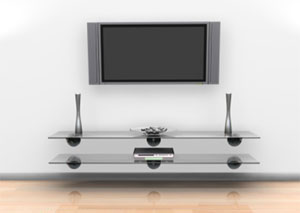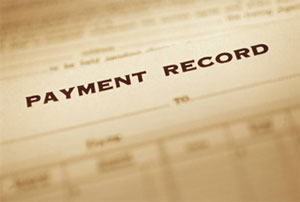
We know the answer is possible and logical. Now, we need to know if it is the answer we were expecting.
Sometimes you can make approximations and estimates to check if your answer is close to what you expected. In the next problem, Beth will make some approximations with some messy numbers so that she can do the math in her head.
Read the problem and answer the questions that follow in your notes.

Beth is at a store shopping for a television. The price of the television that she wants to buy is $897.43. The mounting bracket for the television costs $101.99, and the charge for installation is $199.74. Beth does some quick mental math and decides to spread the payments out over a year–making 12 equal payments. She estimates that her monthly payment will be $100.00. Is this a reasonable estimate of the amount for each payment?
What information is given in the problem?
Interactive popup. Assistance may be required.
The cost of the television is $897.43, the cost of the mounting bracket is $109.99, and the cost for installation is $199.74. Beth will make 12 payments, and her estimate for what each payment will be is $100.00.
What question does the problem ask?
Interactive popup. Assistance may be required.
Is Beth's answer reasonable?
What is your plan for solving this problem?
Interactive popup. Assistance may be required.
Add up the total cost, and then divide by 12.
Was Beth's answer reasonable?
Interactive popup. Assistance may be required.
Yes, adding up the total and dividing by 12 makes the payment amount $99.93, this is reasonably close to $100.00
How did Beth do that in her head?
Interactive popup. Assistance may be required.
She probably rounded each price to the nearest $100:
Television: $900
Bracket: $100
Installation: $200

Rounding can be an effective way to check if your answer to a problem with messy numbers is reasonable. In the previous problem, rounding to the nearest hundred only made a difference of less than $3 in the price of each item—a very reasonable estimate for items that each cost more than $100.00. Be careful not to round too much. You want to round to the nearest number that you can so that you can accurately check your work.
Read the following situation and answer the questions that follow in your notes.

Mr. Jones is working out a budget for household expenses. He looks at the monthly statement from his car insurance, and he sees that he pays $119.00 every month. Based on this information, he budgets $1200.00 for car insurance for the year.
What was the rounded estimate that Mr. Jones used for his monthly car insurance bill?
Interactive popup. Assistance may be required.
Mr. Jones rounded the bill down to $100.00

How much does Mr. Jones actually spend on car insurance in a year?
Interactive popup. Assistance may be required.
119 • 12 = 1428. Mr. Jones spends $1428.00 on car insurance in a year.

Was Mr. Jones's rounding a reasonable estimate?
Interactive popup. Assistance may be required.
No, this rounding changed the value of the number too much.

What would a better estimate have been?
Interactive popup. Assistance may be required.
Mr. Jones could have rounded to the nearest 10 and estimated $120 per month for the car insurance.
